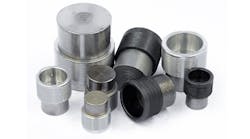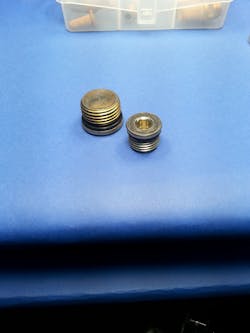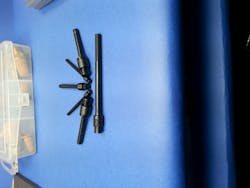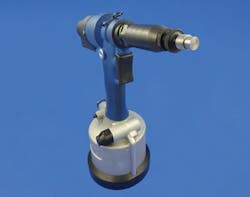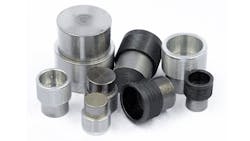To use it, operators easily insert the plug into the tool, positioned the plug into the hole to be sealed and pressed the trigger while maintaining flush contact with the material. The tool then grabs the mandrel while holding the plug’s body just below the manifold’s surface, drawing the pin into the body until the necked down area of the plug reaches the desired break point. When the pin fully engages the body, it creates the necessary radial expansion and seals the hole. Rivet plugs withstand pressures up to 7,250 psi (at a 3 to 1 safety factor) or 500 bar.
The tool is strongly jolted to break the mandrel which gets sent through the tool and into a collection cylinder for easy disposal. A quick, simple and cost-effective permanent seal, rivet-style plugs were a significant improvement to expansion plugs as a sealing alternative.
These two options—ball and rivet plugs—came in a variety of material choices, sizes, pressure ratings and installation tools and have satisfied hundress of thousands of customers and sealed billions of holes for more than 30 years.
Like ball plugs, rivet plugs had room for improvement. The mandrel used to pull the pin into the body gets thrown away, essentially scraping 25% of the plug just purchased.
Pull-style plugs, invented and patented by EIS in 2013, eliminate the broken mandrels left after installing rivet plugs and reduces customers’ costs. It uses spin pull technology to thread the plug onto a tool’s mandrel until it’s ready to insert into the hole for sealing. The plug goes into a simple hole with straight bore while the tool’s nose keeps the plug body slightly below flush of the material’s surface. The operator presses the trigger and the tool pulls the pin into the plug with a predetermined and consistent stroke. It does not rely on reaching a break force to separate the mandrel as with rivet plugs. The stroke fully expands the plug then reverses its spin to remove itself from the installed plug.
